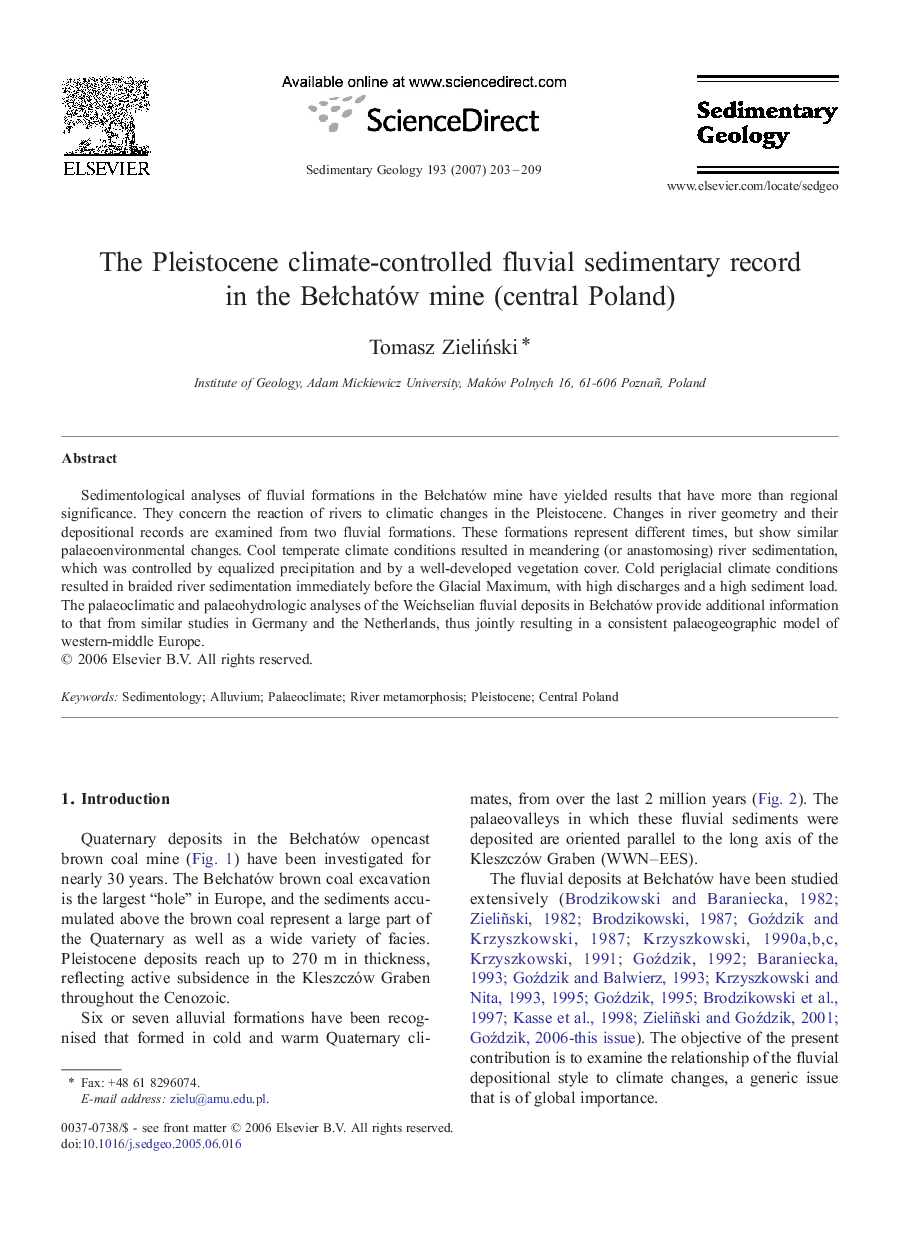| Article ID | Journal | Published Year | Pages | File Type |
|---|---|---|---|---|
| 4690861 | Sedimentary Geology | 2007 | 7 Pages |
Sedimentological analyses of fluvial formations in the Bełchatów mine have yielded results that have more than regional significance. They concern the reaction of rivers to climatic changes in the Pleistocene. Changes in river geometry and their depositional records are examined from two fluvial formations. These formations represent different times, but show similar palaeoenvironmental changes. Cool temperate climate conditions resulted in meandering (or anastomosing) river sedimentation, which was controlled by equalized precipitation and by a well-developed vegetation cover. Cold periglacial climate conditions resulted in braided river sedimentation immediately before the Glacial Maximum, with high discharges and a high sediment load. The palaeoclimatic and palaeohydrologic analyses of the Weichselian fluvial deposits in Bełchatów provide additional information to that from similar studies in Germany and the Netherlands, thus jointly resulting in a consistent palaeogeographic model of western-middle Europe.
